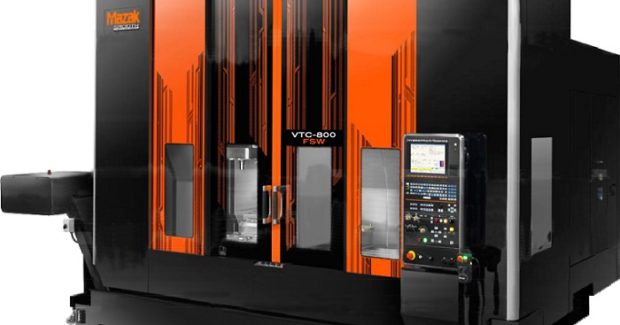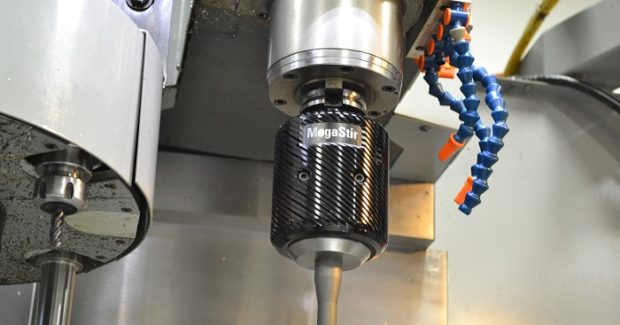Multi-Tasking Changes Everything
Shops are meeting the rising demand for high-mix/low-volume strategies by using innovative multi-tasking machines to fully optimize processes that encompass everything from the moment raw material enters into a shop up to the date the final part gets shipped.
Posted: April 15, 2019
Before the introduction of multi-tasking technology, industrialization centered on the mass production manufacturing paradigm that lasted from the Model T production line of Henry Ford until the modern day. Machine tools were designed to do a single type of operation very efficiently, and parts were processed by spending short times in several different machines. But only a few short years after the first milling spindle was introduced into a turning machine in the early 1980s, multi-tasking had changed everything. Now shops meet the rising demand for high-mix/low-volume strategies by using fully optimized processes that encompass everything from the moment raw material enters into a shop up to the date the final part gets shipped. This is made possible by innovative multi-tasking machines that combine turning, milling, drilling, tapping and boring capabilities with second turning spindles, multiple tool turrets, Y-axis capability, or tilt/rotary milling spindles and worktables.
That’s not all. As the part-processing needs of manufacturers drive machine tool technology beyond its current levels of processing capability, machinery builders have responded by pushing the multi-tasking envelope forward as well. For example, a key limitation of conventional multi-tasking is that all of its operations are subtractive in nature. Enter the hybrid multi-tasking concept, which brings together subtractive processes with those of additive and joining capabilities in highly productive combinations never before possible. In many respects, the benefits of hybrid multi-tasking are similar to those that manufacturers discovered with the first multi-tasking machines. They significantly reduce lead times, especially when factoring in research and development time, and streamline the development of processes. The cost savings from eliminating changeovers and setup time alone with hybrid multi-tasking productivity quickly add up, and with easy integration into automation solutions, multi-tasking machines allow shops to sharply reduce their operating costs and capital equipment expenditures.
Between revolutionary additive technologies such as laser/multi-laser metal deposition and our own HOT WIRE Deposition (HWD) is an equally revolutionary technique that will bring simplicity to some of the most complex joining operations in the world: friction stir welding (FSW). Originally introduced by The Welding Institute (TWI; Cambridge, England) in 1991, FSW generates heat with friction using a rotating pin pressed against a workpiece, creating joints that require little post-processing, use no filler material, resist corrosion and produce a wide range of join types, including hollow ones. During the FSW process, neither the FSW tool nor the workpiece itself melts, which induces less heat into parts than other welding techniques, reducing heat-affected zones.
FSW’s rotating round tool plunges into workpiece material under vertical pressure, dwells momentarily to create a heat pool of plasticized material, then traverses along the workpiece to create the weld. The process moves material from one side to the other, breaking down grain structure and allowing the grains to regrow while the tool shoulder constrains the direction in which they form. This controlled, refined grain regrowth consolidates the welded joint, making the material stronger while retaining its original thermal and chemical properties. On our latest hybrid multi-tasking machines equipped with an FSW head developed by Mazak MegaStir, the entire welding process takes place in a single pass without depositing multiple layers of added metal. This technique dramatically simplifies the processes of repairing welded parts and joining dissimilar metals, including insoluble materials such as nickel and iron.
Because FSW joints require little post-processing, use no filler material, resist corrosion and produce a wide range of joints – including hollow ones – its done-in-one simplicity makes for significant cost savings, in addition to the improved part quality that makes the process popular in numerous industries. FSW is particularly well suited to semiconductor production, as well as the manufacture of batteries, battery trays and vehicles, especially hybrid and electric models. On electric cars, for example, a manufacturing line uses FSW to attach servo-drive motors at each wheel. Shipyards produce decking for aircraft carriers with FSW as their joining method. In the energy industry, deep-hole drilling restricts the use of welded components “down the hole” because conventional welds can constitute weak points on parts, but with FSW those welds maintain the same strength as the overall material.
Whether FSW is used for all-new applications or to simplify existing welding tasks, process flexibility is the key to maximizing the production and efficiency of multi-tasking machines – and incorporating FSW offers greater versatility than other alternatives. Machining centers are now available that add FSW to the machining spindle through a plug-and-play integrated system. These machines include standard 15,000 rpm high-speed 40-taper spindles, full traveling column designs and fixed tables for machining extremely long and heavy workpieces. A full traveling column layout with optional center partitions creates two work spaces from a single fixed table, and the FSW head makes it possible to achieve multi-tasking production of parts that require joining as well as milling. The FSW capabilities use a direct-drive motor driven by the machine tool spindle. Compared to the cutting and removal processes of a mill, the spindle that incorporates the FSW tool spins in the opposite direction, grabbing and pushing material back into itself so it flows both vertically and horizontally.
To create plug-and-play convenience, these hybrid multi-tasking machines with FSW include human/machine interface (HMI) software for user friendliness that makes the technology easy for shops to learn and use. This real-time monitoring also enables the operator to adjust thrust force and material temperature on the fly directly through the CNC controller. Additionally, the software records all data from the operation, giving the shop a charted representation of the actual process involved in producing a part. With the introduction of this technology to the hybrid multi-tasking ecosystem, FSW has become the cost-effective, optimal choice for both precision welding and novel joining techniques. In addition to the advantages for the end user, manufacturers can also perform machining and solid-state joining applications in a single setup. By loading raw material and unloading finished parts – complete with perfect welds for the first time ever – more manufacturers than ever before can enjoy the process optimization benefits made possible by multi-tasking.
Mike Finn co-authored this article. He is the senior applications development manager at Mazak Corporation.













